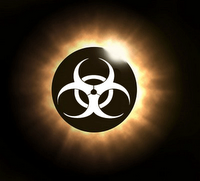A new study published in the Journal of Applied Toxicology has raised some disturbing possibilities regarding the dangers of common hormone-mimicking preservatives found in thousands of consumer products on the market today.1
Titled "Parabens detection in different zones of the human breast: consideration of source and implications of findings," researchers discussed the role that parabens -- a class of estrogen-mimicking chemicals widely used in drugs, foods and cosmetics -- may have in breast cancer and childhood disease.
The report focused on the findings of The Genesis Breast Cancer Prevention Centre at the University Hospital of South Manchester NHS Foundation Trust published last month (March, 2012), which discovered five paraben esters in human breast tissue samples collected from 40 mastectomies from women with primary breast cancer.2 The report revealed three things:
- 1) The ester form of parabens found within the breast tissue samples indicated a dermal route of exposure, as would occur through skin care products and underarm deodorants.
- 2) The paraben residues were found at concentrations up to 1 million times higherthan the estrogen (estradiol) levels naturally found in human breast tissue.
- 3) Propylparaben was found in the highest concentration in the underarm area (axilla), where underarm deodorants are most used and breast cancer prevalence is at its highest.
Also noted in the new study was a highly disturbing possibility: "For exposures in children, concern has already been raised that 'the estrogenic burden of parabens and their metabolites in blood may exceed the action of endogenous estradiol in childhood and the safety margin for propylparaben is very low when comparing worst-case exposure' (Boberg et al., 2010)."
In other words, synthetic hormones from chemicals like parabens may actually be eclipsing the activity of endogenously produced (natural) hormones in our children. Given that 99.1% of the US population's urine samples (ages 6 or older) contain methylparaben, this issue has broad-ranging implications.
Presently, European regulations allow for the use of parabens in cosmetics at up to 0.4% by volume. The limits in the US are much less restricted. According to the FDA's website: "The Cosmetic Ingredient Review (CIR) reviewed the safety of methylparaben, propylparaben, and butylparaben in 1984 and concluded they were safe for use in cosmetic products at levels up to 25%. Typically parabens are used at levels ranging from 0.01 to 0.3%." Parabens are also FDA-approved for use as food preservatives.
Given the fact that modern-day toxicological risk assessments do not account for the adverse effects of chronic, low-dose exposures, nor the reality of synergistic toxicities, i.e. the reality that a chemical's adverse effects may be amplified when present alongside other chemicals, this new research points to a disturbing possibility: commonly used preservatives may be contributing greatly to the burden of disease in exposed populations -- especially infants and children, whose body burden is higher (lower body weight vs. chemical dose), susceptibility to chemically-induced genotoxicity higher (because their cells replicate more rapidly), and detoxification systems are less developed than adults.
It is becoming increasingly clear that in order to protect ourselves and especially our offspring from avoidable chemical exposures this country needs to implement the precautionary principle in its toxicological risk assessments: if there is indication that a chemical could do harm (based on cell and animal studies), it should be treated as if it does do harm, and be regulated accordingly. Until then, we are effectively a living and breathing nation of guinea pigs.
For additional research on paraben toxicity visit our research page on the topic. Also, view four studies on ginger's ability to reduce paraben toxicity.
References:
[1] Measurement of paraben concentrations in human breast tissue at serial locations across the breast from axilla to sternum. J Appl Toxicol. 2012 Mar ;32(3):219-32. Epub 2012 Jan 12. PMID: 22237600
[2] Parabens detection in different zones of the human breast: consideration of source and implications of findings. J Appl Toxicol. 2012 May ;32(5):305-9. Epub 2012 Mar 7. PMID: 22408000




Reader Comments
to our Newsletter